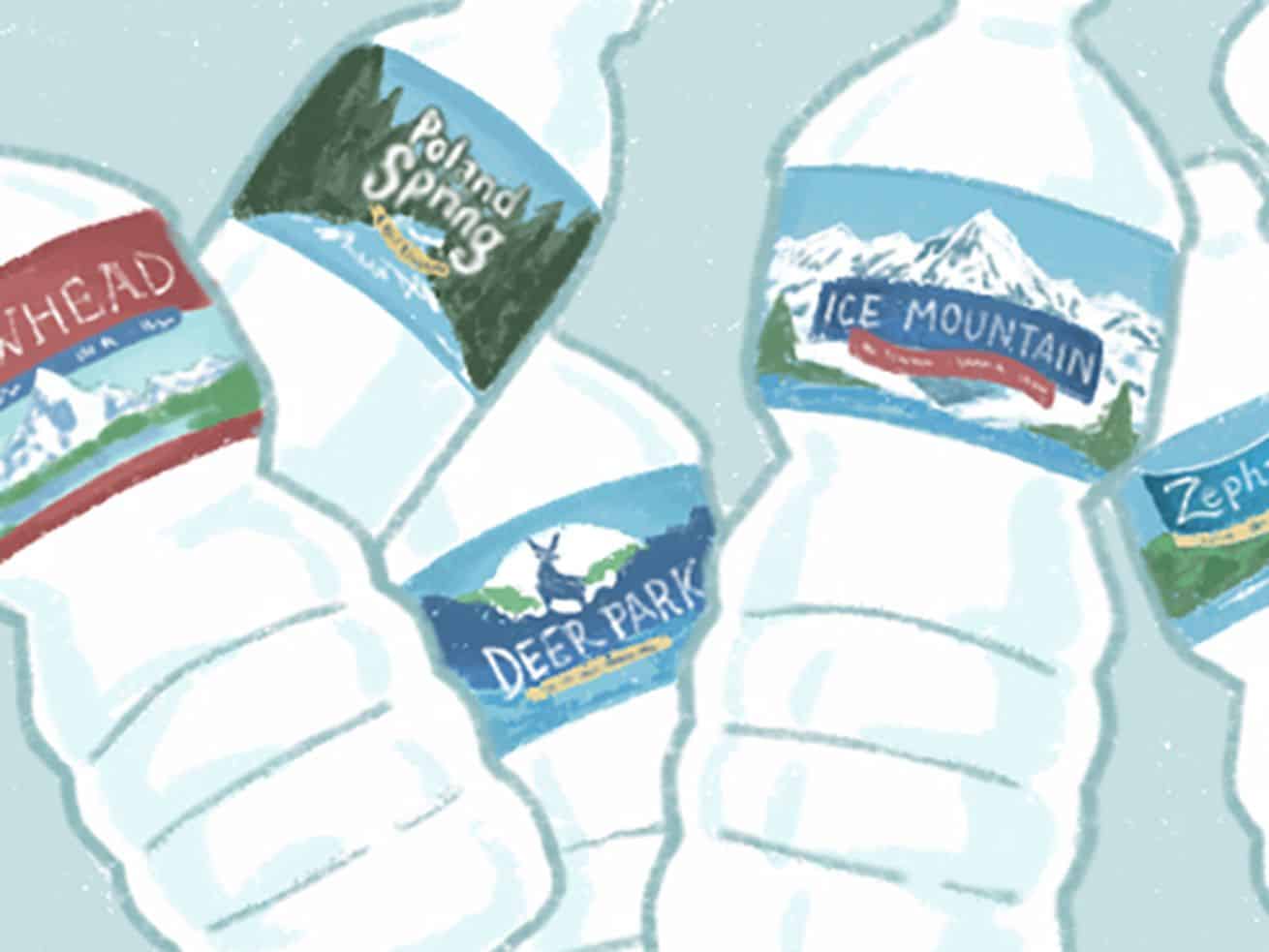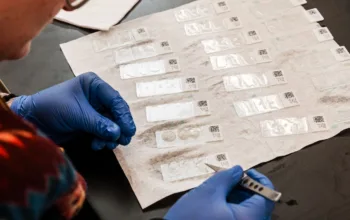Selling out a national resource, at 75 billion bottles every year.
Sources:
- Frequently Asked Questions, Ice Mountain Water
- “Bottled Water, Unbowed by the Covid-19 Crisis, Grows Again in 2020,” Beverage Marketing Corporation, May 2021
- “Bottled Water 2019: Slower but Notable Growth,” by John G. Rodwan, Jr.
- Plastic Water: The Social and Material Life of Bottled Water, by Gay Hawkins, Emily Potter, and Kane Race, MIT Press
- “Bottled Water Everywhere: Keeping it Safe,” US Food and Drug Administration
- “Bottled Water Becomes Number-One Beverage in the U.S.,” Beverage Marketing Corporation, March 2017
- “NAPCOR Releases 2019 PET Recycling Report,” National Association for PET Container Resources
- What the Eyes Don’t See: A Story of Crisis, Resistance, and Hope in an American City, by Mona Hanna-Attisha, One World
- “Flint residents paid America’s highest water rates,” Detroit Free Press, by John Wisely, February 2016
- “Michigan OKs Nestlé Water Extraction, Despite 80K+ Public Comments Against It,” NPR, by Bill Chappell, April 2018
- Bottled and Sold: The Story Behind Our Obsession with Bottled Water, by Peter Gleick, Island Press
- “1836 treaty puts Michigan tribes at center of Nestle water bid,” MLive, by Garret Ellison, June 2017.
- “Plastic waste inputs from land into the ocean,” Science, February 2015.
Author: Marina Bolotnikova
Read More

/cdn.vox-cdn.com/uploads/chorus_asset/file/22696074/1_Water1.jpg)
/cdn.vox-cdn.com/uploads/chorus_asset/file/22696080/2_water_graphic.jpg)
/cdn.vox-cdn.com/uploads/chorus_asset/file/22696084/3_Water_spring.jpg)
/cdn.vox-cdn.com/uploads/chorus_asset/file/22696091/4_water_pet.jpg)
/cdn.vox-cdn.com/uploads/chorus_asset/file/22696108/5_water_landfill2.jpg)
/cdn.vox-cdn.com/uploads/chorus_asset/file/22696111/6_water_coastlines.jpg)
/cdn.vox-cdn.com/uploads/chorus_asset/file/22696113/7_water_faucet.jpg)
/cdn.vox-cdn.com/uploads/chorus_asset/file/22696117/8_water_treaty.jpg)
/cdn.vox-cdn.com/uploads/chorus_asset/file/22696133/9_water_beaver1.jpg)
/cdn.vox-cdn.com/uploads/chorus_asset/file/22696632/10_water_triton.jpg)
/cdn.vox-cdn.com/uploads/chorus_asset/file/22696633/11_water_beaver2.jpg)
/cdn.vox-cdn.com/uploads/chorus_asset/file/22696637/12_water_flint1.jpg)
/cdn.vox-cdn.com/uploads/chorus_asset/file/22696641/13_water_bottledcrisis.jpg)
/cdn.vox-cdn.com/uploads/chorus_asset/file/22696642/14_water_flint2.jpg)
/cdn.vox-cdn.com/uploads/chorus_asset/file/22696644/15_water_peter.jpg)
/cdn.vox-cdn.com/uploads/chorus_asset/file/22696646/16_water_final.jpg)


